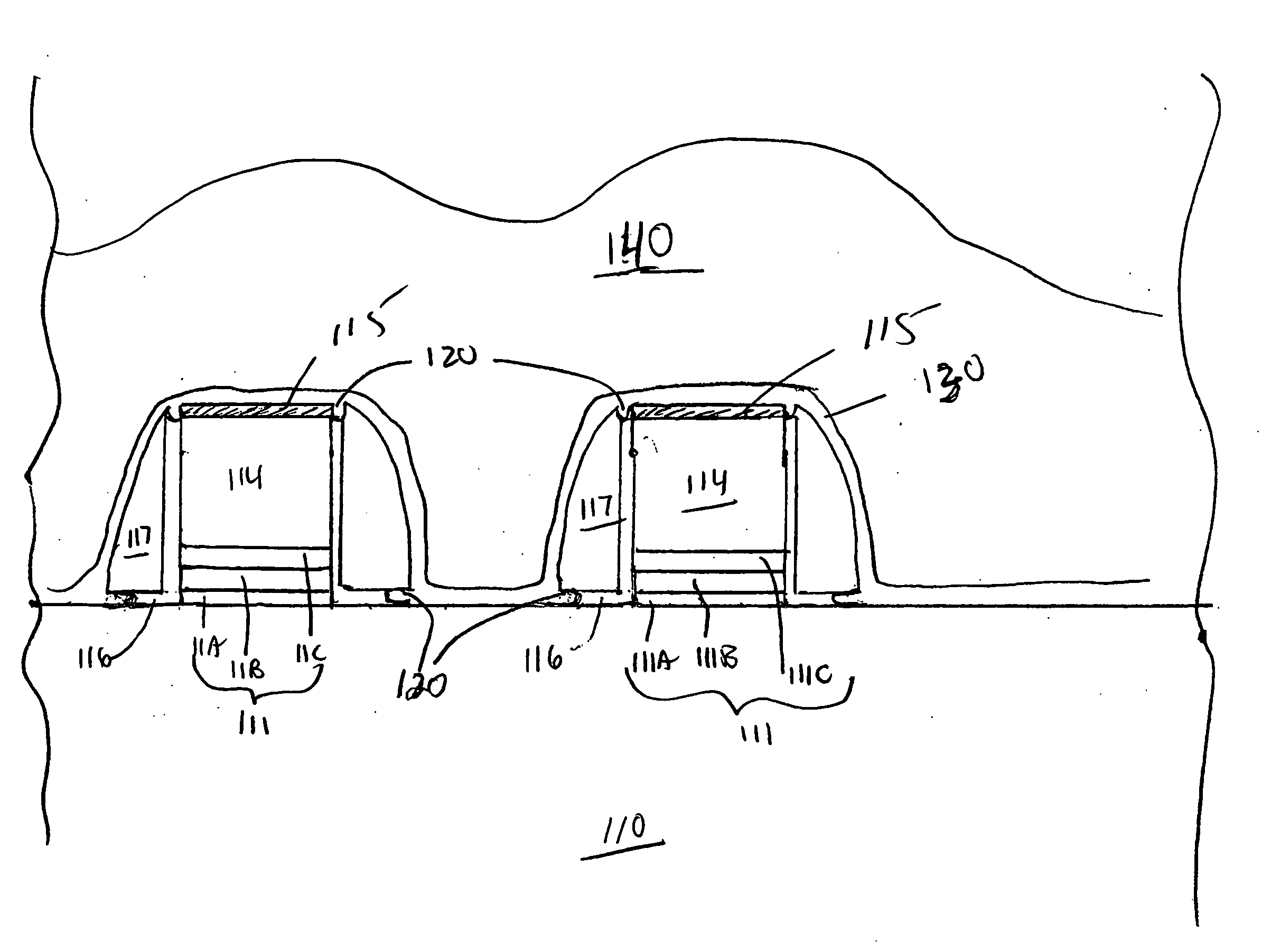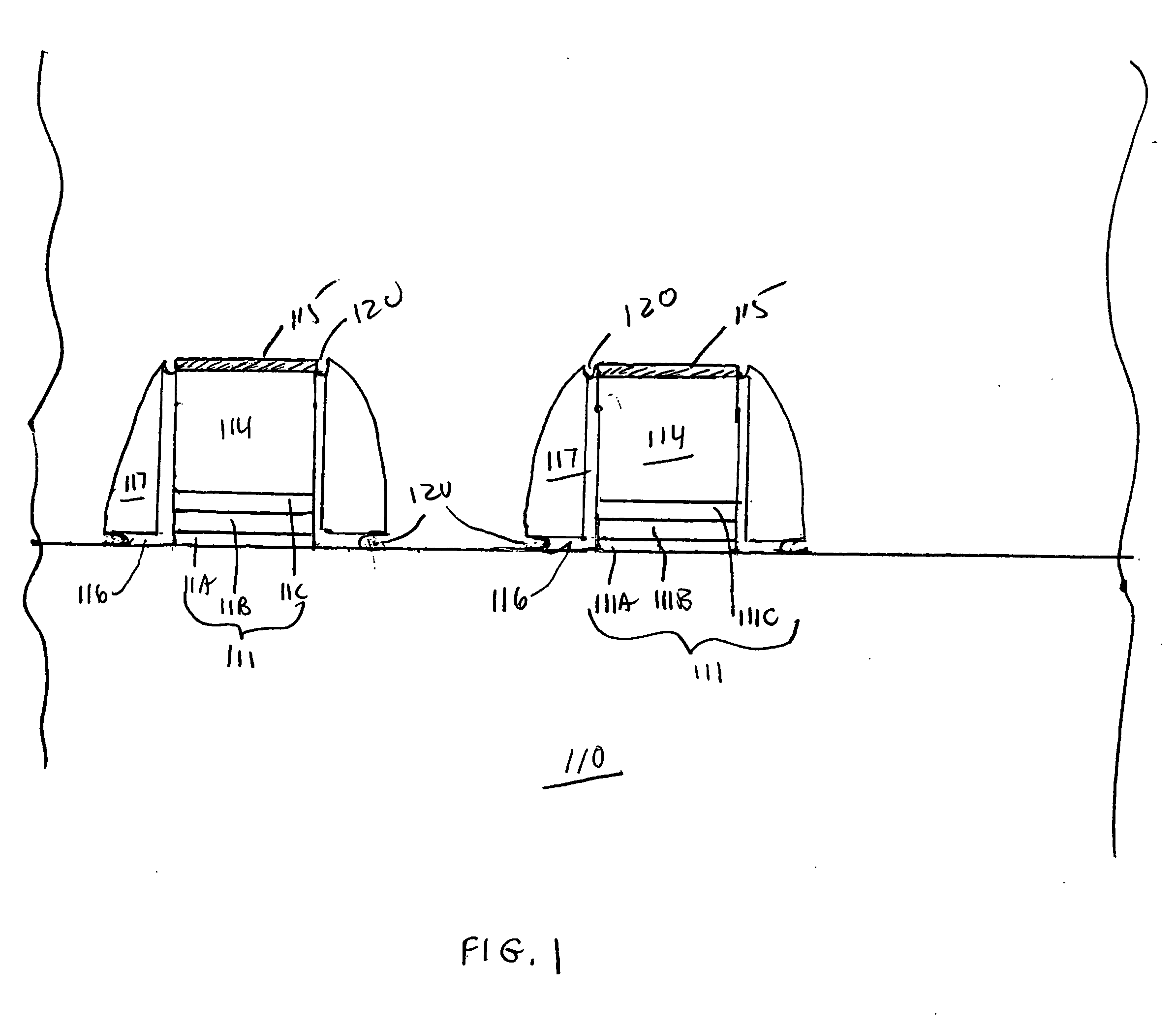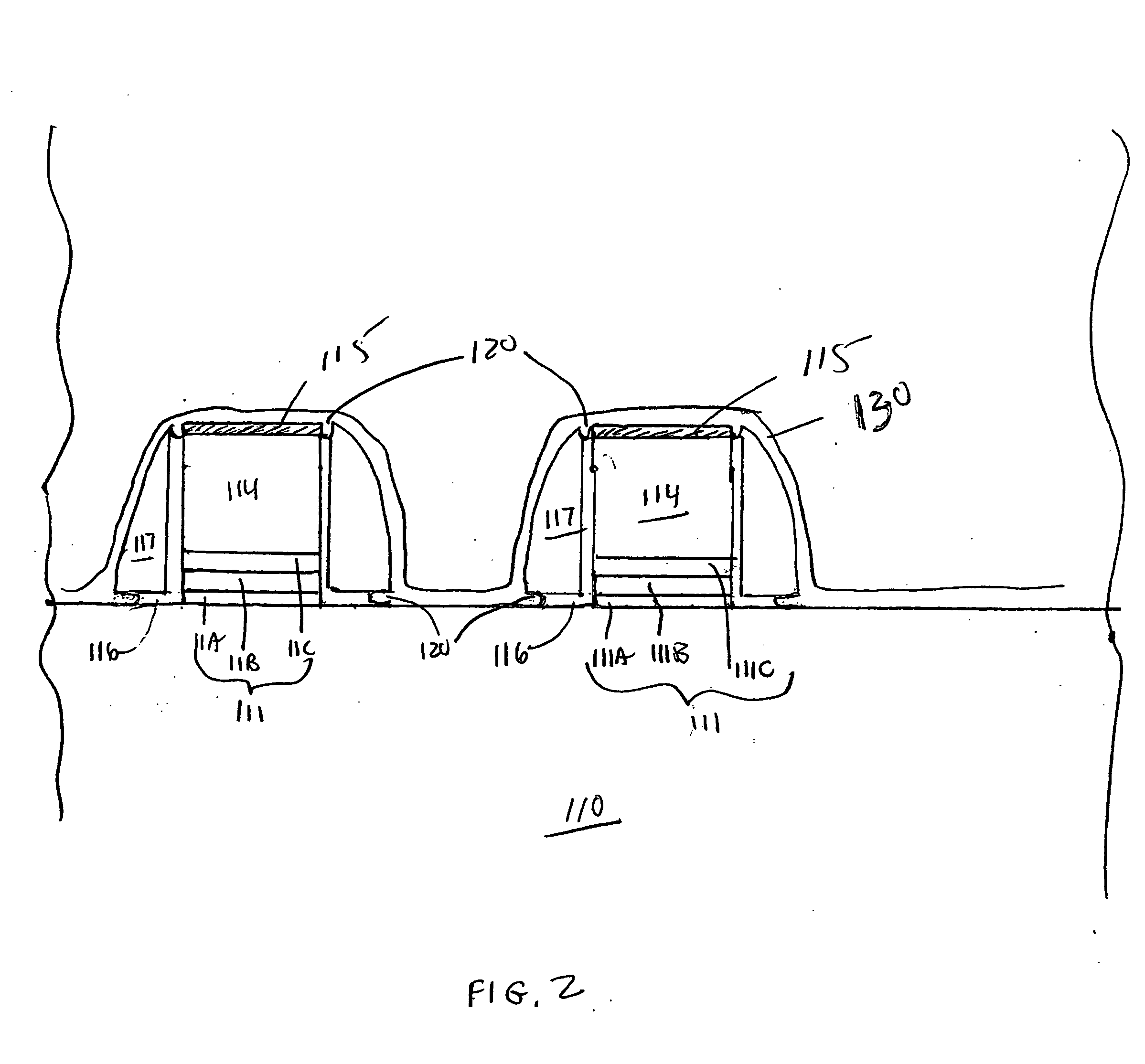Conformal liner for gap-filling
a gap-filling and liner technology, applied in the field of semiconductor device manufacturing, can solve the problems of increasing the difficulty of completely filling gaps, forming undercut regions on the sidewall spacers of gate electrodes, and destroying silicon under the spacers, so as to improve reliability, improve manufacturing throughput, and improve reliability.
- Summary
- Abstract
- Description
- Claims
- Application Information
AI Technical Summary
Benefits of technology
Problems solved by technology
Method used
Image
Examples
Embodiment Construction
[0018]The present invention addresses and solves various reliability problems attendant upon conventional semiconductor fabrication techniques. These problems arise as semiconductor memory device dimensions continue to shrink, making it increasingly more difficult to deposit an ILD0 to effectively fill high aspect ratio gaps between closely spaced apart gate electrode structures, particularly wherein the gate electrode stacks comprise spacers with undercut regions. The inability to effectively fill such high aspect ratio gaps leads to various reliability problems and reduced yields.
[0019]The present invention addresses and solves that problem, and provides methodology enabling the fabrication of gate electrode structures with nickel silicide layers, by strategically depositing an extremely thin conformal layer of silicon oxide or silicon nitride as a liner in the gap and into the undercut portions. The silicon oxide liner can be deposited by various techniques, such as atomic layer ...
PUM
 Login to View More
Login to View More Abstract
Description
Claims
Application Information
 Login to View More
Login to View More - R&D
- Intellectual Property
- Life Sciences
- Materials
- Tech Scout
- Unparalleled Data Quality
- Higher Quality Content
- 60% Fewer Hallucinations
Browse by: Latest US Patents, China's latest patents, Technical Efficacy Thesaurus, Application Domain, Technology Topic, Popular Technical Reports.
© 2025 PatSnap. All rights reserved.Legal|Privacy policy|Modern Slavery Act Transparency Statement|Sitemap|About US| Contact US: help@patsnap.com



